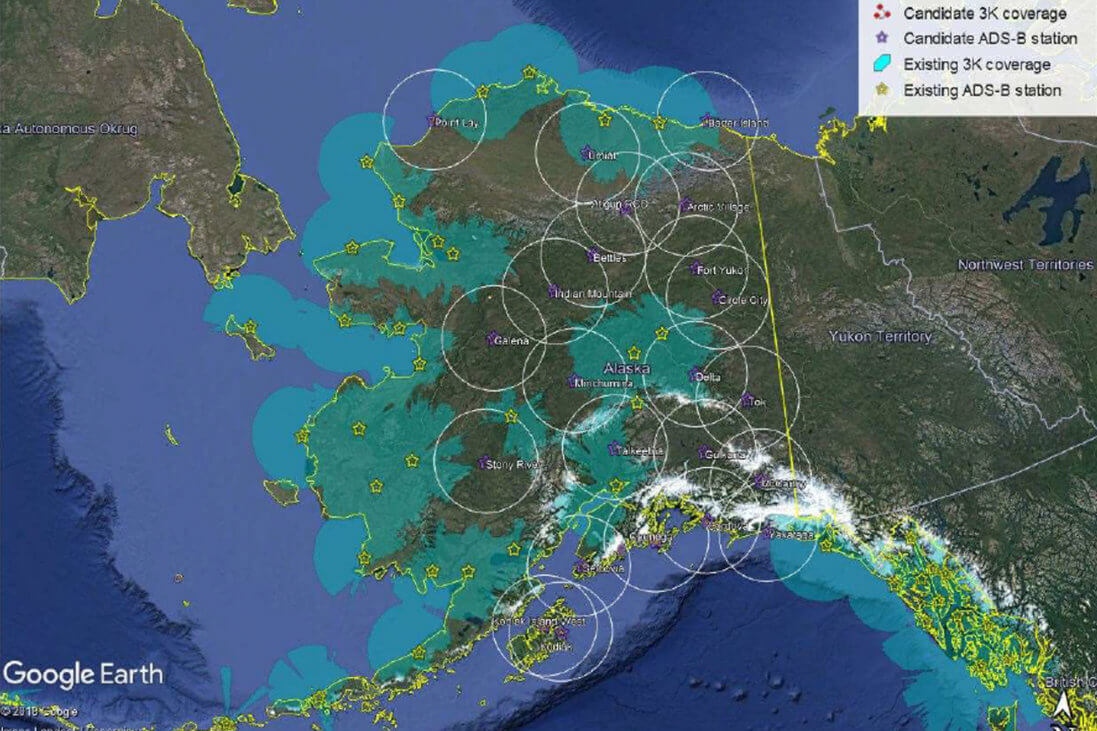
Oct. 3, 2019
NBAA joined with the Aircraft Owners and Pilots Association, the Alaska Airmen Association and the Alaskan Aviation Safety Foundation, in urging the FAA to create a Minimum Operational Network for ADS-B coverage in Alaska.
“Our organizations have been involved in the development of ADS-B since the start of the Capstone Program, which provided the operational demonstration of this technology for the nation,” the Oct. 1 letter states. “While the two areas used to prototype this technology are covered, and additional stations have been added for some portions of Alaska, we continue to experience large gaps in coverage in areas of the state that have significant air travel.”
To cover the major sections of the low-altitude routes used by commercial and general aviation aircraft, the letter identified 23 additional ADS-B ground stations. A Google Earth view of the state shows the locations, typically airports, with circles denoting approximate coverage. Shaded circles depict the existing ADS-B coverage at 3,000 feet above ground level, and the proposed sites fill most of the gaps and touch the border at every cardinal heading. View the full letter and proposed sites. (PDF)
The additional locations are the result of a group analysis done in support of Section 321 of the FAA Reauthorization Act. It analyzed the existing ADS-B coverage, proposed RNAV terminal transition routes (T-Routes), recent flight tracks from the satellite-based Aireon ADS-B coverage of Alaska, and the 2005 MITRE analysis.
In proposing the sites, the associations stated they would “like to see actual sites selected to optimize the coverage along these routes (identified by the circles depicted), as opposed to providing coverage just at the airport.” To obtain the maximum possible coverage for these areas, when locating the ADS-B ground stations, the FAA should not exclude high sites or other existing telecommunications infrastructure.
“Filling these gaps should also encourage more aviation businesses and aircraft owners who fly in Alaska to equip, as they will obtain the benefits in the areas they operate,” the letter concludes.


 International Business Aviation Council Ltd.
International Business Aviation Council Ltd.